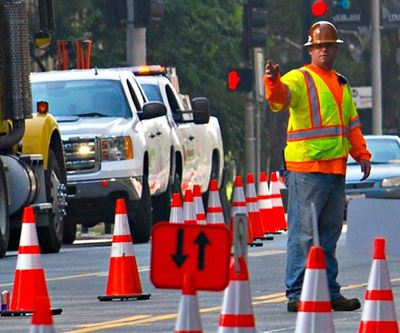Introduction
Ensuring road safety and effective traffic management is crucial in today’s fast-paced world. Besides regulations and vigilant authorities, proper equipment utilisation is critical in maintaining a smooth traffic flow. Among these tools, the indispensable traffic cone stands out. This article will explore why traffic cones are essential for promoting road safety and efficient traffic control.
Improved Visibility and Communication
The bright colours of traffic cones serve as attention grabbers, allowing them easy visibility from a distance. Whether marking off construction areas or guiding vehicles through tunnels or lanes, their vivid hues make them noticeable to drivers and pedestrians. Furthermore, many modern traffic cones for sale feature reflective materials or strips that enhance visibility during nighttime or adverse weather conditions. By displaying messages through signs or symbols on these cones, they effectively communicate information to motorists and pedestrians regarding detours, lane changes, or potential hazards up ahead.
Mitigating Accidents
Road accidents tend to spike when construction projects are in progress on busy roads or highways. These heightened risks necessitate an increased focus on safety measures around construction zones. Traffic cones serve as a crucial line of defence, protecting workers and drivers from accidents that could arise due to distractions or sudden changes. By creating a barrier between equipment, construction zones, workers on site and passing vehicles, these versatile tools remind drivers to be cautious when approaching risky areas. Studies consistently demonstrate that using traffic cones significantly reduces accidents by prompting drivers to slow down and stay alert to dangers.
Efficient Traffic Management
During infrastructure projects that require temporary traffic redirection, strategically placing traffic cones is crucial for ensuring traffic flow throughout congestion. These sturdy devices effectively guide traffic into designated lanes while indicating detour routes. Authorities use traffic cones to separate lanes for construction activities, allowing regular traffic to move smoothly. Reducing confusion and improving clarity for drivers and road authorities can mitigate congestion problems and lower the risk of accidents from changes in traffic patterns.
Flexibility and User Friendliness
The design of traffic cones prioritises simplicity and ease of use. Their compact size enables portability for placement wherever needed. The weight also helps keep them in place, preventing these tools from getting blown by strong winds or passing vehicles accidentally. Their collapsible design also adds to their convenience, making it easy to stack them up for transport or storage. These features make traffic cones an ideal option, whether it’s managing crowds at events or directing traffic around accident sites efficiently.
Versatility Goes Beyond Roads
While primarily known for road safety purposes, many use traffic cones outside of highway maintenance. For example, airports commonly use them to guide pedestrians along paths or mark no-parking zones near boarding areas. Furthermore, many employ traffic cones in sports events as markers for areas or organising spaces, like marking fields during games or creating queues at sales events.
Cost-Effective and Reusable
One of the benefits of using traffic cones is their affordability. Traffic cones offer a cheaper solution than road maintenance and construction safety equipment. Their low cost allows for deployment without straining budgets. Moreover, traffic cones are a highly durable, eco-friendly option that users can always employ. Once a construction project has reached completion or there is no longer a need to redirect traffic, authorities can quickly gather, store, and reuse these cones for other road projects or events. This ability to reuse them reduces waste and leads to cost savings in the long run.
Driver Behavior Impact
Besides their advantages in ensuring road safety and effective traffic control, traffic cones impact driver behaviour. The presence of cones signals drivers to proceed cautiously and adhere to designated routes or speed limits. Research indicates that drivers tend to display calmer driving behaviours when encountering areas marked with cones by adjusting their speed or maintaining better lane discipline. This positive effect on driver conduct underscores the importance of incorporating traffic cones into road safety measures.
In Conclusion
Traffic cones have become components in promoting road safety and effective traffic control in environments. From their attention-grabbing design to functioning as barriers that guide drivers’ actions around hazards, these versatile tools play a role in preventing road accidents efficiently. The user-friendly nature, durability, and versatility of traffic cones ensure their significance in redirecting traffic seamlessly while minimising disruptions during construction activities.


